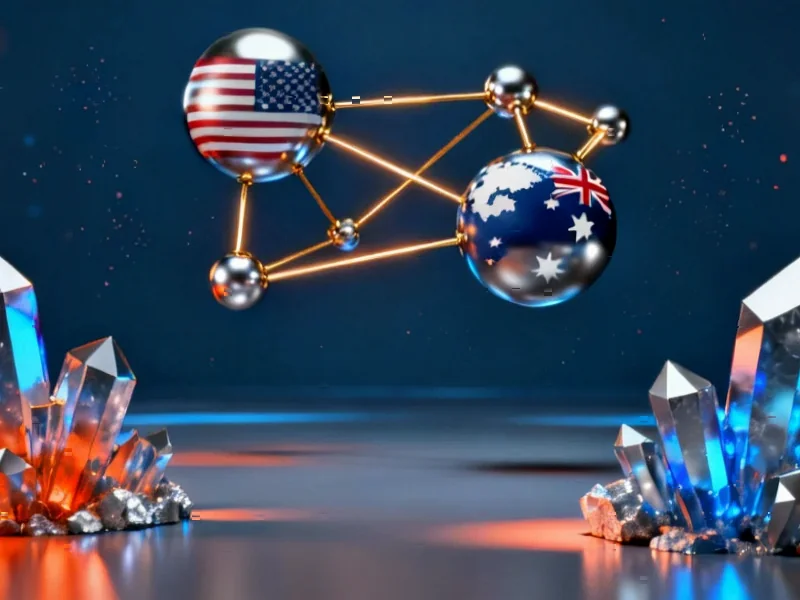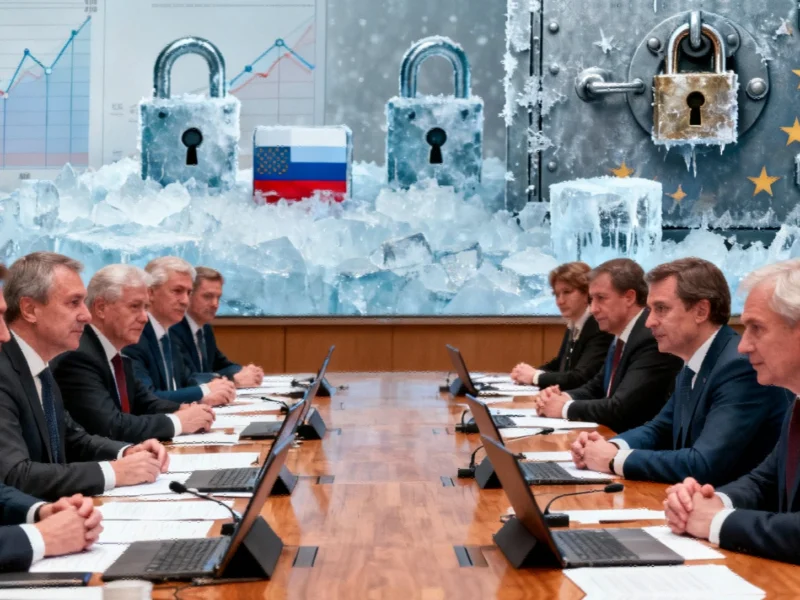Strategic Minerals Alliance Forms
In a significant move to counter China’s dominance in critical minerals, former President Donald Trump has secured a partnership with Australia that could fundamentally alter global supply chains for rare earth elements and other strategic resources. The agreement, announced Monday, represents the latest effort by the United States to secure alternative sources for minerals essential to defense systems, clean energy technologies, and consumer electronics.
The White House summary indicates the partnership will grant the United States access to Australia’s substantial mineral reserves while Australia commits to investing billions in American defense companies. This arrangement comes as both nations seek to reduce their vulnerability to supply disruptions and what Trump characterized as China’s “sinister and hostile” export restrictions on rare earth minerals.
Substantial Investments Planned
According to the agreement, the United States and Australia intend to invest $3 billion in critical mineral projects within the next six months, with projected outcomes reaching approximately $53 billion in total project value. The Defense Department has additionally committed to funding a new Australian refinery expected to produce 100 tons of gallium metal annually—a component crucial for semiconductors and defense applications.
Trump expressed confidence in the timeline, stating, “In about a year from now, we’ll have so much critical minerals and rare earths that you won’t know what to do with them.” His administration has positioned mineral security as a cornerstone of foreign policy, with efforts extending beyond Australia to include strategic investments in other resource-rich nations.
Broader Security Implications
The minerals agreement builds upon previous security cooperation, including the AUKUS submarine pact between Australia, Britain, and the United States. Trump reaffirmed commitment to this nuclear submarine agreement despite earlier administration doubts, noting its potential deterrent value in the Taiwan Strait. This comes amid regional tensions, including a recent incident where a Chinese fighter jet released flares near an Australian Air Force aircraft patrolling the South China Sea.
Australian Prime Minister Anthony Albanese characterized the partnership as taking bilateral relations “to the next level,” emphasizing both regional security and economic benefits. However, his office clarified that the agreement creates no legally binding obligations, describing it instead as an “action plan” for cooperation.
Global Mineral Strategy Expands
The Australia partnership represents just one facet of a broader U.S. strategy to secure critical minerals worldwide. The Trump administration has previously explored opportunities in Greenland and Canada, while recently pledging $75 million to develop Ukraine’s mineral reserves—framed by Kyiv as securing American support against Russian aggression. Additionally, the United States has invested in Angolan railway infrastructure to facilitate access to central African minerals.
Kevin Hassett, Trump’s National Economic Council director, emphasized Australia’s role in creating “less risky” global supply chains resistant to “rare earth extortion” from China. This approach aligns with broader industry trends toward supply chain diversification and resilience.
Technological and Economic Context
Rare earth minerals and critical elements are essential components in numerous advanced technologies, from electric vehicle motors to fighter jet systems. As technology manufacturing becomes increasingly sophisticated, secure mineral access grows more strategically important. The Australia partnership specifically addresses gallium production, reflecting concerns about software and hardware security in critical systems.
While pursuing the Australia agreement, Trump simultaneously suggested potential reconciliation with China, indicating he might secure a trade deal during upcoming Asia travels. This dual approach—strengthening alternative supply sources while leaving room for negotiation with Beijing—characterizes the complex geopolitics of mineral security. The administration has also been attentive to emerging technology threats that could impact economic and national security.
Future Implications
The U.S.-Australia partnership signals a potentially permanent shift in how Western nations approach mineral security. By combining American investment with Australian resources, the arrangement could establish a template for similar agreements with other mineral-rich allies. As this comprehensive analysis details, the collaboration extends beyond simple resource extraction to include processing infrastructure and defense industry integration.
Whether this partnership can effectively counter China’s established dominance in rare earth processing remains uncertain, but it undoubtedly represents the most concerted effort yet to create alternative supply chains. The success or failure of this initiative will likely influence global technology manufacturing and geopolitical alignments for decades to come.
This article aggregates information from publicly available sources. All trademarks and copyrights belong to their respective owners.
Note: Featured image is for illustrative purposes only and does not represent any specific product, service, or entity mentioned in this article.



